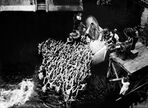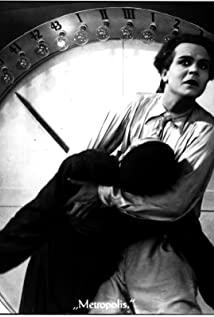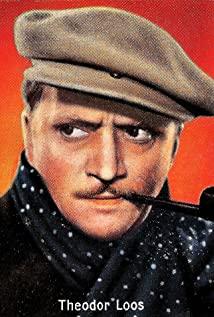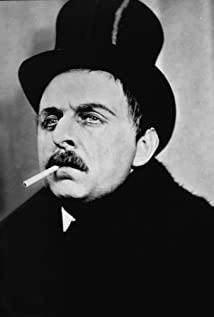Fritz Lang's structural vision of the future city is like a beacon that leads the future aesthetics of a number of later sci-fi films. At the beginning of the film, a large number of close-ups of modern mechanical operations show this era of rapid technology and people being enslaved by technology. The workers in the underground world bowed their heads like prisoners, with expressionless faces, moving slowly and uniformly, entering the field of work where they coexist with machines. On the ground, the ruling class enjoys an elegant and modern life, with high-rise buildings and cars passing by. They enjoy the fruits of the labor of the underground workers, but the workers who make everything with their hands cannot live decently in the world they built. . This set of strong contrasts reveals the film's central conflict, the alienated relationship between class, domination and ruled, machine and man. Workers injured or killed in machine accidents are carried out on stretchers, and machines are created by humans, only to be eaten by machines.
Fredson is the ruler of this metropolis. His wife Haier has passed away. Luo Hong, a mad scientist who has been in love with Haier, built a huge statue of Haier to mourn, and also made a 24-hour work day. Resting robot. Maria is calling on the workers to build the tower of Babel that can be picked from the stars. Like faith, she shines brightly on the stage of the underground world. Faced with such a vast and even impractical project, the brain and hand need a regulator, the "heart". And the ruler Fredson's son Fred became this "heart" because of his love for Maria. Obviously, the ruler Fredson implied God, he let scientists make robots look like Maria to confuse the workers and incite the workers to rebel and riot, so that he can justifiably carry out repression with violence to destroy Their tower of Babel plan. And the scientist full of personal vendetta secretly let the robot Maria instigate the workers to destroy the entire metropolis. The appearance of robot Maria is a spooky, sexy, seductive, wild, and sexually charming dance. The men in the audience were stunned and went crazy. She is the complete opposite of the angelic image and temperament of the real Maria, and is more provocative than that. Such a symbolized woman (Seven Deadly Sins) full of provocative and sexual liberation images is a very representative screen image of patriarchal society. The final riot, the destruction of the machines, the great flood, the burning of Maria the robot as a witch, and the final reconciliation of Fred letting his father shake hands with the workers (the regulator of the brain and the hand must be the heart) fully embodies Fritz Lang. the "moderate" appeal.
View more about Metropolis reviews











